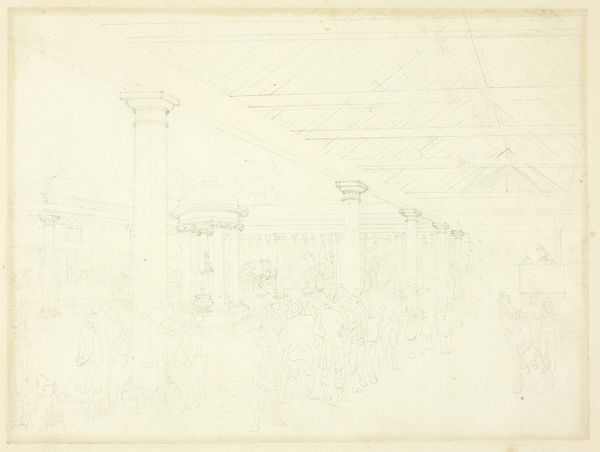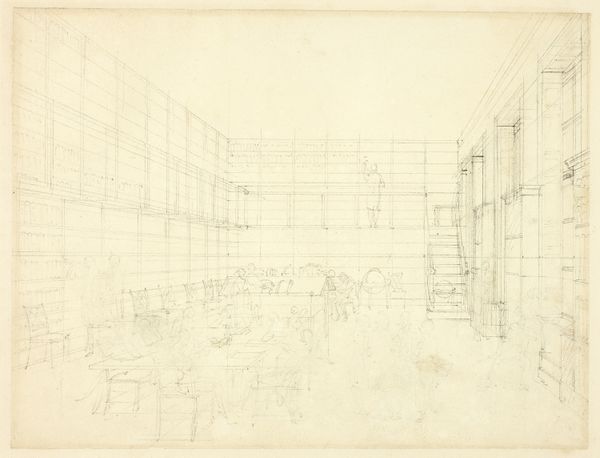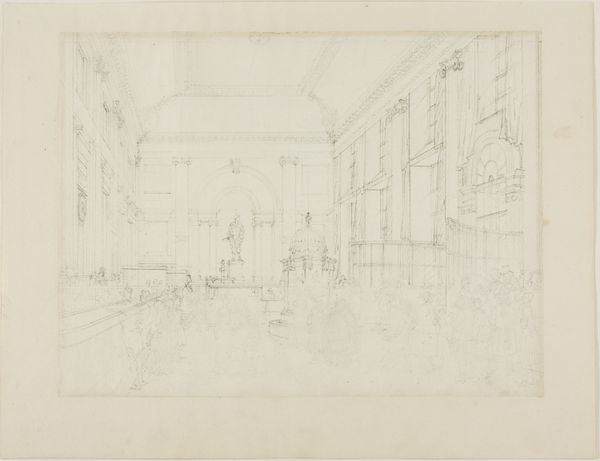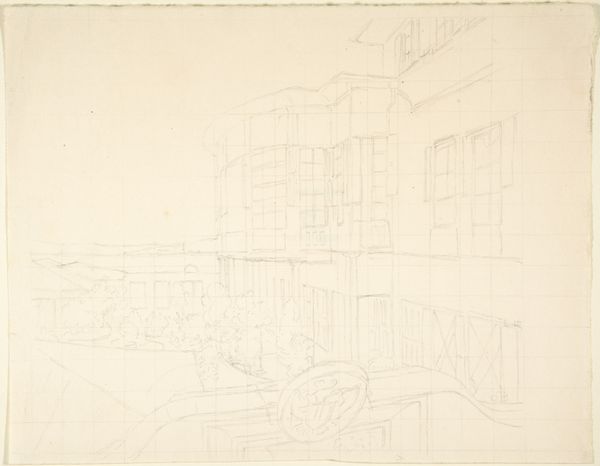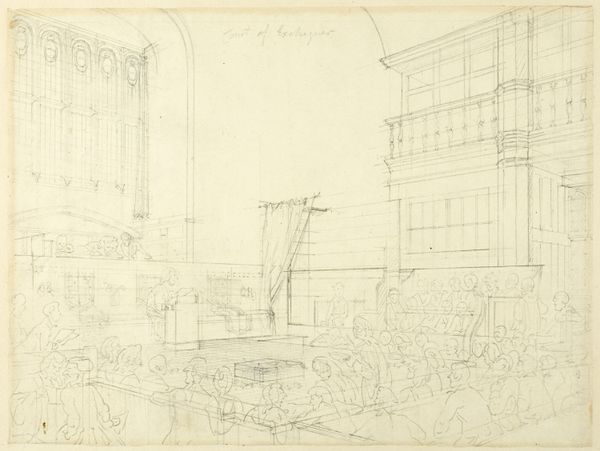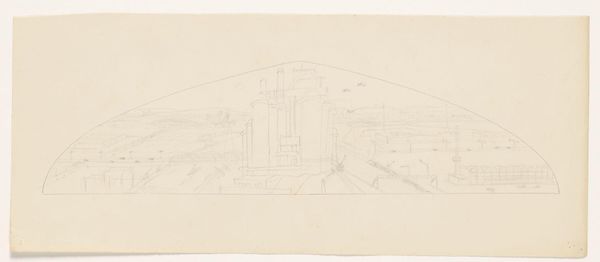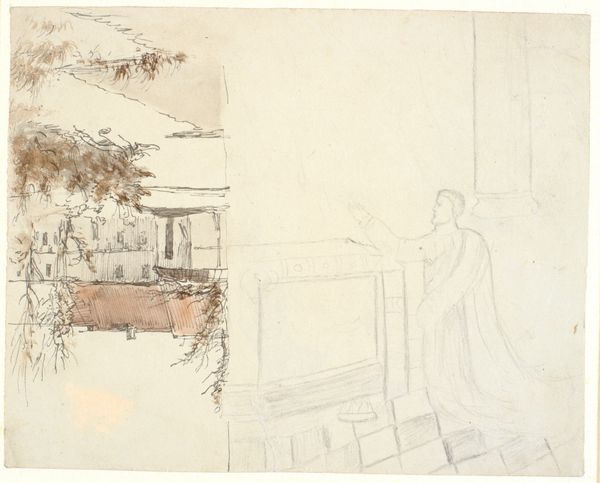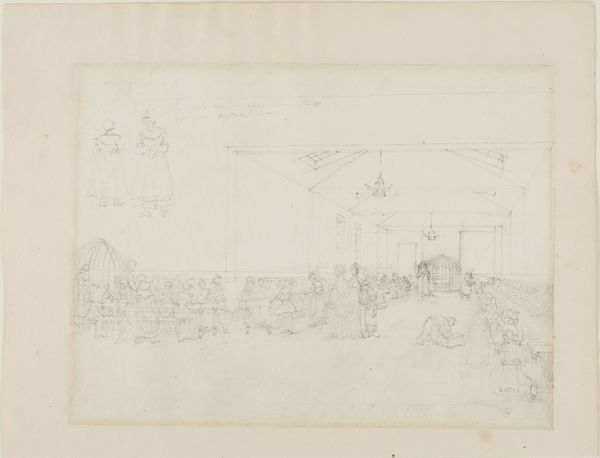
Sketch of Building and Garden 1810 - 1883
0:00
0:00
drawing, print, pencil
#
drawing
#
garden
# print
#
landscape
#
etching
#
pencil
#
building
Dimensions: 7 11/16 x 9 13/16 in. (19.5 x 24.9 cm)
Copyright: Public Domain
Editor: This is "Sketch of Building and Garden," dating sometime between 1810 and 1883, by Franz von Hauslab the Younger. It's a pencil and etching work displayed at the Metropolitan Museum of Art. The airy quality and visible linework gives the impression of an artist capturing an ephemeral moment. What do you see in this piece, Professor? Curator: Well, it immediately strikes me how this delicate sketch reflects the era's changing relationship with nature. Look at the building, likely a conservatory – a space specifically designed to control and display nature. What does that say about power structures, about who has the privilege to curate nature for their own pleasure? Editor: So you're suggesting the act of sketching the conservatory and garden is inherently tied to socio-economic privilege? Curator: Precisely. Consider the context: the rise of industrial capitalism, colonialism… Botanic exploration boomed and new species were collected, transported, classified, possessed! The very act of sketching becomes a way to document and, in a sense, to claim ownership. The artist, a privileged observer, reduces nature to a composed scene. What is being left out? Editor: That's fascinating. I hadn't considered the act of composing the image as an act of asserting power over nature. It also highlights how the building creates a divide. Curator: Yes, and even consider how these structures often mimic or re-imagine ‘exotic’ landscapes within a controlled, domestic setting. Are these botanical trophies a celebration of the beauty of nature, or rather a subtle demonstration of colonial power? Who is this space truly *for*? Editor: It really changes how I view these kinds of landscapes. Thanks for illuminating the power dynamics within! Curator: It's a reminder to always question whose perspectives are prioritized in art and what narratives are being perpetuated. This is just a scratch on the surface.
Comments
No comments
Be the first to comment and join the conversation on the ultimate creative platform.

